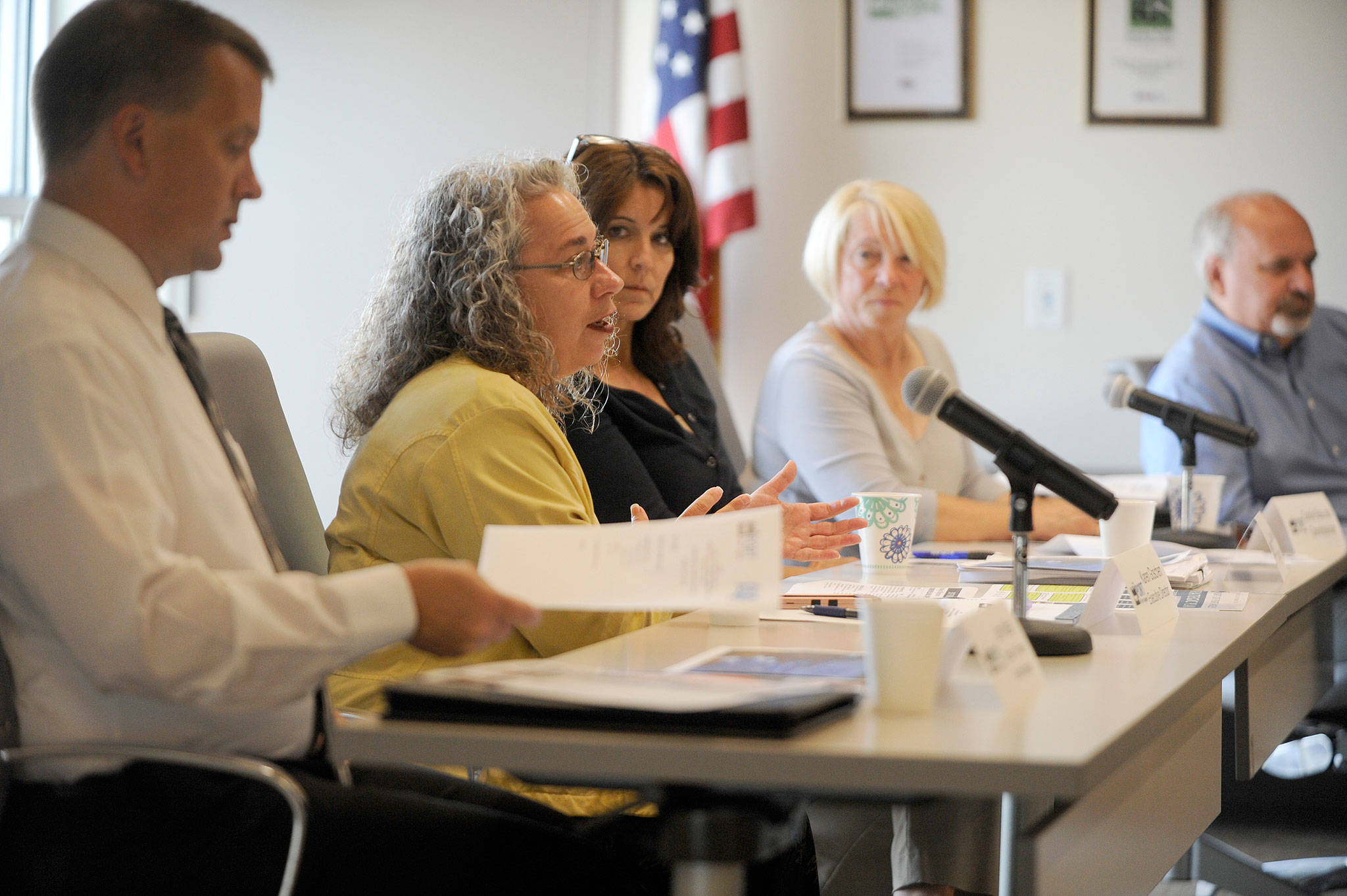Port of Port Angeles commissioners see Clallam County’s public utility district as a potential partner in their goal to boost economic development, thanks to the PUD’s broadband network that stretches across most of the the Olympic Peninsula.
But commissioners from both boards are seeing familiar problems with bringing new businesses to the peninsula.
The problem is not broadband infrastructure, PUD network engineer Shawn Delplain said, at a joint Port-PUD meeting on Aug 1.
Companies are hesitant to move here with no large workforce pool, he said, and a perception that shipping and receiving goods to and from the peninsula is much more problematic than in the Seattle area.
“Most companies don’t look at us (as a good opportunity),” Delplain said.
“When we’re looking from the economic development perspective, we’re looking at high-tech investors knowing the capacity is there,” Karen Goschen, executive director for the Port of Port Angeles said. “It’s important to know we have that capability in our community.”
Commissioners met last week in Carlsborg to explore combining efforts, and while the PUD isn’t able to participate directly in economic development projects, commissioner Ted Simpson noted, the district can help with infrastructure such as broadband.
Delplain detailed the PUD’s broadband “backbone” that stretches from Blyn toward the West End. PUD uses broadband for its needs and sells excess bandwidth to Internet service providers (ISPs) but does not offer retail services, Delplain explained.
“We’re not an ISP; (they) are built to deal with customer service,” he said. “I don’t know if we can do (retail) less expensively than an ISP.”
Delplain said that using PUD broadband makes sense for local businesses looking for stronger point-to-point Internet access but not so much for residential uses, who generally can get service cheaper from local ISPs such as Wave Broadband and CenturyLink.
Delplain said he gets a call every week or two from potential new businesses seeking information about broadband offerings.
In 2003, the PUD completed a broadband pilot program in Sequim and constructed a 24-mile fiber optic loop between Port Angeles and Sequim.
“We kind of built our own backbone,” Delplain said.
Clallam County PUD offers broadband from Blyn to the Elwha River plus several “spurs” to the West End — including to 23 entities in Forks — but not in the City of Port Angeles, where the municipality has a contract with Wave Broadband.
Potential partnerships
Colleen McAleer, Port of Port Angeles commissioner for the Sequim area, said her organization is authorized to purchase property and lease out the land or the land and a Port-funded structure to prospective businesses.
“We’d hate to miss an opportunity,” she said. “They (businesses) often want their own land. In that case, we wouldn’t have a role.”
The PUD could be a partner in the process, McAleer said, if those companies were interested in broadband services.
“If you hear of a company that needs broadband, we want to be a partner and support that.”
A lack of workforce numbers is an issue that local economic leaders struggle with, McAleer said. Port commissioners on Tuesday said they support the concept of more internships at local entities such at the PUD.
PUD general manager Doug Nass said the utility district recently graduated three people from a lineman training session and three more started last week.
“I’d like to see government be the leader in generating the workforce,” McAleer said. “Our biggest export is young people.”
Port commissioner Steve Burke said the Port of Port Angeles has no power to directly promote workforce development but can help nonprofits with similar efforts.
“The way I look at it is … we want to create jobs and opportunities for people in the community,” McAleer said.
Timber, airline issues
Port of Port Angeles commissioners said two top issues they are dealing with are getting a sustainable timber harvest and establishing a regional airline at the William R. Fairchild International Airport.
“We have this natural resource that we should look to, to build our future,” Port commissioner Connie Beauvais said of the peninsula’s timber resources. “We are working to get that harvest level to be where it needs to be.”
Burke detailed the use of cross-laminated timber — including the use of it in construction of a four-classroom building at the nearby Greywolf Elementary School — and urged PUD commissioners to consider use of CLT or something similar if they construct more buildings in the near future.
“That helps get the story (of CLT) out,” Burke said.
Burke also noted that while Port Angeles’ air service struggled to fill 40-passenger flights, most airlines are listing 80 passenger planes as their smallest aircraft.
“Don’t hold your breath,” Burke told PUD commissioners about finding a new air service for Port Angeles.
“We’re working on it (but) it’s a difficult problem unless we find some sort of subsidy.”
Even with a no-cost lease from the Port of Port Angeles, an airline would need to charge about $160 per ticket to be profitable, Burke said — well above the price point goal of about $100.
“It’s not unique to us: a lot of communities in our state are in the same predicament,” Burke said. “Most of these small, regional (airports) are barely making it anyway.”
Port commissioner Burke said there may be an opportunity for regional airports like Port Angeles when Alaska Airlines begins commercial air service from Everett’s Paine Field in 2018. That may allow smaller regional carriers another option to get to the I-5 corridor. Most regional carriers don’t want to fly in and out of SeaTac, Burke said, because heavy traffic causes bottleneck issues.
McAleer said the Port is looking for a long-term solution for the airport.
“If we start it up and have it two years, that’s not a win,” McAleer said.



